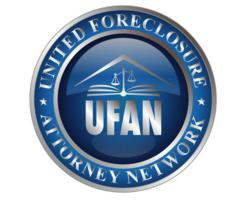
Memphis, TN (PRWEB) October 25, 2011
Holtmeyer & Monson announced today two key executive appointments. The company has promoted Penny Newbauer to the position of executive vice president and has hired Josh Miller as vice president to play integral roles in driving and strategically supporting the companys ongoing expansion. Holtmeyer & Monson has experienced a 30 percent increase in Small Business Association (SBA) loan closings since this time last year and has recently added eight more banks to its client roster.
After building an extensive career in corporate business and the financial services industry, Ms. Newbauer joined Holtmeyer & Monson in 2006 as vice president and national servicing manager. She has been responsible for providing guidance in the proper preparation of closing documents for SBA loans, as well as 1502 reporting, payment setup and processing and the development of servicing requests for SBA and Colson approvals since that time. In this expanded role as executive vice president, Ms. Newbauer will manage the companys overall loan servicing function as well as portfolio management and compliance.
Mr. Miller has joined the company from Paragon National Bank in Memphis where he was a vice president. For more than a decade, he has served in various commercial finance capacities. As vice president at Holtmeyer & Monson, he will manage all aspects of the companys lender account relationships across the country.
Endorsed by the Independent Community Bankers of America (ICBA), Holtmeyer & Monson offers the full spectrum of SBA lending services from training staff and loan application and closing services, to securitization and sale to the secondary market and portfolio servicing. The company enables banks to extend much needed capital to small business borrowers; at the same time, freeing the institutions from the complexities and inherent bureaucracy associated with SBA lending. Holtmeyer & Monsons unique fee structure enables banks to generate a great deal of income without incurring net costs because fees are capitalized right into a borrowers loan.
Within three months of forging our partnership with Holtmeyer & Monson this year, we efficiently closed or received agency approval for five SBA loans, said Charles Ruyle, EVP/Operations Director at Citizens Bank of Rogersville in Missouri. The first three generated non-interest fee income equal to what we would normally achieve in two years from other sources. Holtmeyer & Monson has been very key to our success with some fairly complicated SBA lending requirements; we are now not only able to fulfill the needs of local businesses, but also capture an alternative source of revenue.
Penny and Josh are skilled bankers, but even more importantly, they understand the nuances of SBA lending and what it takes to bring these loan opportunities to a successful close for clients, like Citizens Bank of Rogersville, said Arne Monson, president and co-founder, Holtmeyer & Monson. Their contributions will be instrumental in moving the company forward and helping us to continue providing highly specialized services that enable banks to enhance their profitability through government-guaranteed lending.
About Holtmeyer & Monson
Holtmeyer & Monson provides banks with comprehensive, out-of-house services and the high level of expertise required for SBA lending. The Company helps community banks offer small businesses access to capital while benefitting from a highly lucrative source of fee income. Holtmeyer & Monson covers every stage of the process from loan packaging and closing, to securitization and sale, through portfolio servicing. Based on its full-service capabilities and credibility, banks can be confident that their SBA lending credits will be handled expertly, efficiently and with the highest levels of safety and soundness. Visit http://www.holtandmon.com for more information and subscribe to our bi-monthly newsletter, SBA Lending Matters.
# # #






